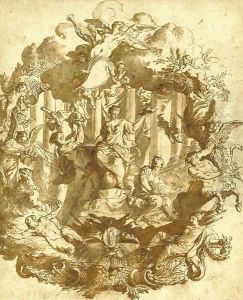Matthaus Terwesten Paintings
Matthäus Terwesten was a Dutch artist born on May 22, 1670, in The Hague, Netherlands. He was known for his painting, engraving, and decoration skills, which he developed during a period in art history known as the Dutch Golden Age. This era was characterized by great wealth and cultural achievement in the Dutch Republic, and artists like Terwesten contributed to its rich artistic legacy.
Terwesten began his artistic education at the tender age of 10 under the guidance of his brother Augustinus Terwesten, who was also a well-respected painter. He further honed his skills by studying under the accomplished Dutch Golden Age painters Willem Doudijns and Jacob van der Does. In his formative years, Terwesten’s style was influenced by the grandeur and dramatic use of light and shadow characteristic of the Baroque period.
In 1695, Terwesten traveled to Italy, which was a common practice for artists of his time who wished to study the classical arts and the Renaissance masters. He spent a significant amount of time in Rome, which allowed him to immerse himself in the works of great Italian artists, an experience that deeply influenced his subsequent work.
Upon returning to The Hague in 1697, Terwesten established himself as a reputable artist, gaining commissions for both public and private works. He became known for his allegorical scenes, portraits, and decorative paintings for buildings and homes of the elite. In 1719, Terwesten was appointed as a professor at the Academy of Fine Arts in The Hague, a position that he held for many years, influencing a new generation of Dutch artists.
Matthäus Terwesten's contribution to the arts also includes his role as one of the founding members of the Confrerie Pictura, an association of artists that broke away from the traditional Guild of Saint Luke. The Confrerie was crucial in elevating the status of artists in The Hague and promoting the arts in the region.
Throughout his career, Terwesten enjoyed considerable success and recognition. His works were appreciated for their elegance, detail, and mastery of classical themes. Terwesten continued to paint and teach until his later years. He passed away on January 6, 1757, in his hometown of The Hague. His legacy is preserved through his works, which can be found in various museums and collections, and through his influence on the Dutch art scene of his time.
